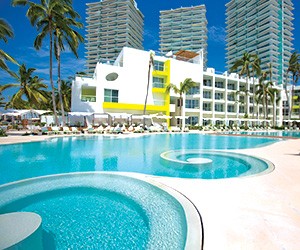When you have a tight budget with limited wiggle room and a request for a luxury resort property for a meeting or incentive, what do you do?
This could be a recipe that calls for an all-inclusive.
“One of the key advantages of using an all-inclusive resort is budgeting with the end-user aware of all their costs up front,” says Bob Schuster, national director of meetings and conferences for CMP Meeting Services, a Dallas-area company. “Since the resort is self-contained with a variety of facilities and services, the company has a captive audience, so to speak, to communicate their message.”
Once synonymous with bargain hunting vacationers in search of a giant pool, a tan and a single price for everything from rooms and food to drinks and scheduled entertainment, all-inclusives are now aggressively courting meeting groups.
“The reduction of out-of-pocket costs provides great value to event planners, who also find peace of mind in knowing that their event participants will have all of the amenities and services of a premium resort experience,” says Andrew Flack, vice president of global brand marketing for Hilton Hotels and Resorts.
Positives and Negatives
By nature, all-inclusives encourage guests to stay on property and assume the role of the thoroughly engaged attendee Schuster describes.
That element can also be a negative for some groups, says Alan Kleinfeld, an independent planner for CMM Advisors in Folly Beach, S.C.
“All-inclusive resorts are loaded with distractions like sandy beaches, swimming pools and lounges, so a strong focus on creating the most productive itinerary is imperative,” Kleinfeld says. “It’s no problem, of course, if one of the goals of the meeting is to give attendees plenty of free time to relax and enjoy themselves as tourists as well as meeting attendees.”
Some all-inclusives don’t always include audiovisual equipment, coffee breaks and other items in the price, however, and add extra charges.
Jerry Hitzhusen, director of symposiums on Therapeutic Recreation and Project Life for the School of Natural Resources at the University of Missouri in Columbia, believes the all-inclusive concept is only a viable option if all negotiations and agreements are done up front and there are no last-minute add-ons. PageBreak
Other drawbacks include a lack of summertime appeal, since many all-inclusives are in areas with high temperatures in June, July and August, and also when attendees engaged in intense, day-long meetings might desire to leave the property for a reprieve and not fully utilize the amenities.
Negatives aside, the multitude of recreation and dining options and enjoying what “feels” like free food and drinks are appealing at all-inclusives.
“Attendees can select their own activities, food and beverage, and the timing of when they want to participate in those activities or dine,” says Mary Young, president of M.Y. Events, a Tempe, Ariz.-based meeting planning firm. “Many all-inclusive resorts offer several different restaurants, which can be a bonus for groups with wide ranges of ages or activity levels.”
Young maintains that service levels are often superior at all-inclusives.
“The staff is accustomed to the style of service and goes out of their way to make sure everyone has a good overall experience,” she says. “In food and beverage outlets, it offers more time for service when they’re not constantly dealing with payment and gratuities.
Many times, too, depending on the size of your group, the hotels may customize the food and beverage options for your group,” she adds.
Hybrid All-Inclusive
But not all groups may want to venture to Mexico and the Caribbean, where most all-inclusives are located. An increasing number of U.S. resort properties are now offering an abbreviated version of an all-inclusive.
“The U.S. resort all-inclusive is a different model than offshore,” Schuster says. “They may not be able to offer the depth of an all-inclusive such as room service and the liquor component to compete with offshore.
“The U.S labor costs are different,” he continues, “and some of the amenities offered offshore are major profit centers for stateside resorts.”
Young says the U.S. all-inclusive at a major resort is appealing to groups depending on their overall goals.
“If you’re there to meet and able to utilize the meeting space as presented, it’s great,” Young says. “Unfortunately, many times it doesn’t work out as a cookie-cutter formula. If a property is flexible with credits, planners can usually make it work.
“I’ve worked with several properties that allowed us to use a per day rate for meeting, spa and golf so we could switch up the schedule and know the daily rate for budget purposes,” she continues. “It makes it so much easier to speak with clients when you can discuss a day rate and the options within that rate.”
Edward Schmidt Jr. always frequents the fitness center after the all-inclusive resort buffet.






